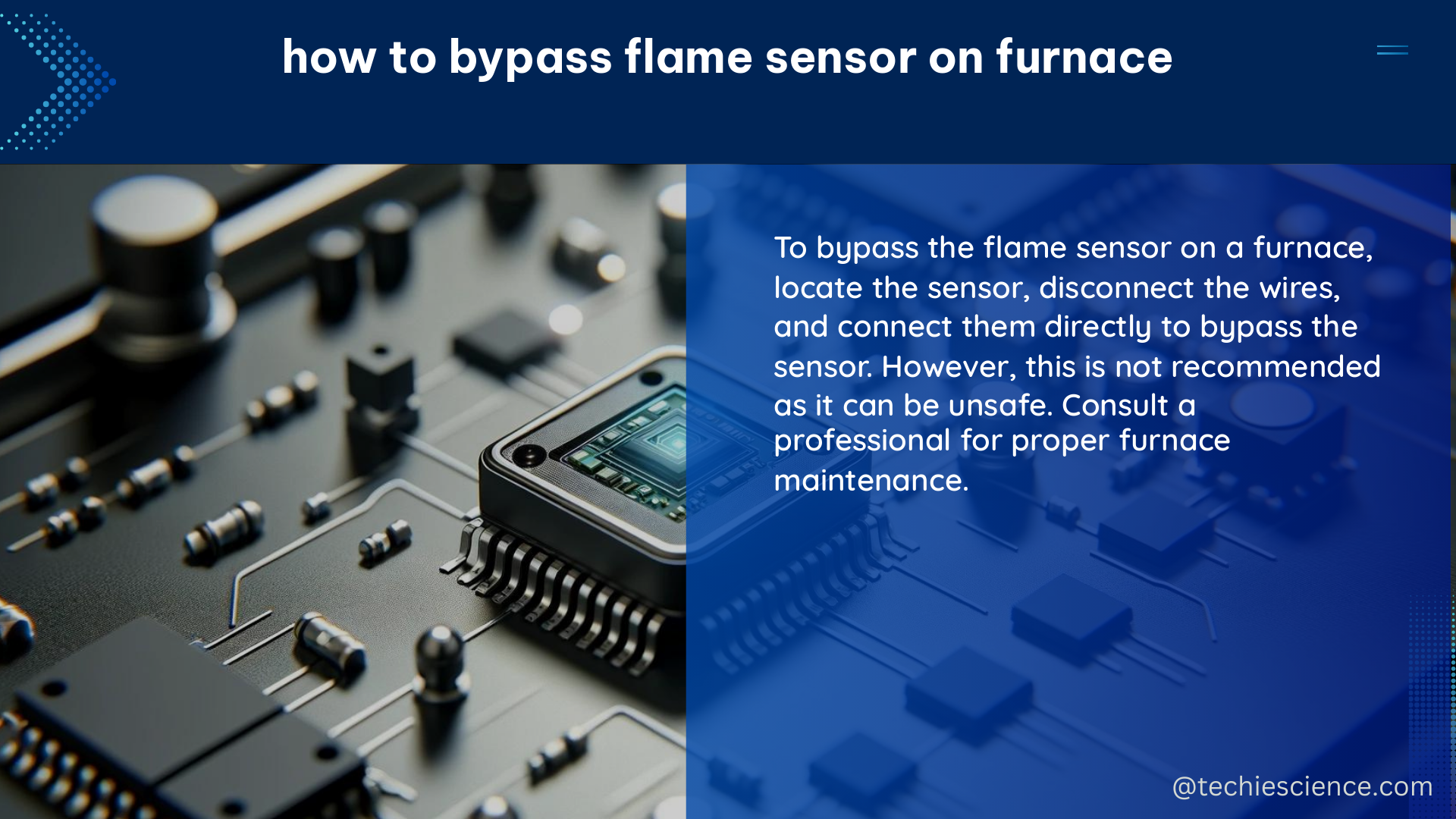Bypassing the flame sensor on a furnace can be an extremely dangerous and risky endeavor, as it can lead to serious safety hazards, property damage, and even personal injury. However, for those who are well-versed in HVAC systems and are willing to take on the risks, this guide will provide a detailed, technical, and comprehensive overview of the process.
Understanding the Flame Sensor
The flame sensor on a furnace is a critical safety device that is designed to detect the presence of a flame and ensure that the furnace is operating safely and efficiently. It works by detecting the infrared radiation emitted by the flame, and when the flame is present, the sensor sends a signal to the furnace’s control board, allowing the furnace to continue operating. If the flame is not detected, the sensor sends a signal to the control board to shut off the furnace.
Technical Specifications of Flame Sensors
- Flame sensors are typically made of ceramic materials that are resistant to high temperatures, with a sensing element that is mounted in close proximity to the flame.
- They are designed to detect infrared radiation in the 2-14 micron range, which is the wavelength range emitted by the flame.
- The sensor is connected to the furnace’s control board via wiring, and it typically has a response time of less than 1 second.
Bypassing the Flame Sensor

To bypass the flame sensor on a furnace, you would need to bypass the safety measures that are in place to ensure that the flame is present and burning efficiently. This typically involves disconnecting or modifying the wiring that connects the flame sensor to the furnace’s control board.
Step-by-Step Instructions
-
Shut off power to the furnace: Before attempting to bypass the flame sensor, it is crucial to shut off the power to the furnace to prevent any electrical hazards.
-
Locate the flame sensor: The flame sensor is typically located near the burner assembly, and it is usually a small, cylindrical device with a wire connected to it.
-
Disconnect the flame sensor: Carefully disconnect the wire that is connected to the flame sensor, taking note of the wiring configuration to ensure that you can reconnect it correctly later.
-
Bridge the flame sensor circuit: Using a jumper wire or a piece of conductive material, create a connection between the two terminals where the flame sensor was connected. This will effectively bypass the flame sensor and allow the furnace to continue operating without it.
-
Restore power to the furnace: Once the flame sensor has been bypassed, restore power to the furnace and test the operation to ensure that the furnace is functioning correctly.
Risks and Considerations
It is important to note that bypassing the flame sensor can be extremely dangerous and should only be attempted by experienced HVAC professionals. Doing so can result in the furnace continuing to operate even when there is no flame present, leading to a buildup of natural gas or other fuels, which can be extremely hazardous. Additionally, bypassing the flame sensor can result in the furnace operating inefficiently, leading to higher energy bills and reduced equipment lifespan.
Alternatives to Bypassing the Flame Sensor
If you are experiencing issues with your furnace’s flame sensor, it is strongly recommended that you contact a licensed HVAC professional. They can diagnose the issue and recommend the appropriate course of action, which may involve cleaning or replacing the flame sensor. This is the safest and most effective way to address any problems with your furnace’s flame sensor.
Conclusion
Bypassing the flame sensor on a furnace is an extremely risky and dangerous endeavor that should only be attempted by experienced HVAC professionals. If you are experiencing issues with your furnace’s flame sensor, it is strongly recommended that you contact a licensed professional for assistance. Doing so can help ensure the safety and efficiency of your furnace, and prevent any potential hazards or damage.
References
- Honeywell Gas Detection. (2013). Gas Detectors Handbook. Retrieved from https://www.honeywellanalytics.com/~/media/honeywell-analytics/documents/english/11296_gas-book_v5_0413_lr_en.pdf?la=en
- U.S. Department of Energy. (2016). Improving Process Heating System Performance. Retrieved from https://www.energy.gov/sites/prod/files/2016/04/f30/Improving%20Process%20Heating%20System%20Performance%20A%20Sourcebook%20for%20Industry%20Third%20Edition_0.pdf
- Reddit. (2023). Is it electrically inefficient to use my computer as a heat? Retrieved from https://www.reddit.com/r/AskEngineers/comments/17n344z/is_it_electrically_inefficient_to_use_my_computer/

The lambdageeks.com Core SME Team is a group of experienced subject matter experts from diverse scientific and technical fields including Physics, Chemistry, Technology,Electronics & Electrical Engineering, Automotive, Mechanical Engineering. Our team collaborates to create high-quality, well-researched articles on a wide range of science and technology topics for the lambdageeks.com website.
All Our Senior SME are having more than 7 Years of experience in the respective fields . They are either Working Industry Professionals or assocaited With different Universities. Refer Our Authors Page to get to know About our Core SMEs.